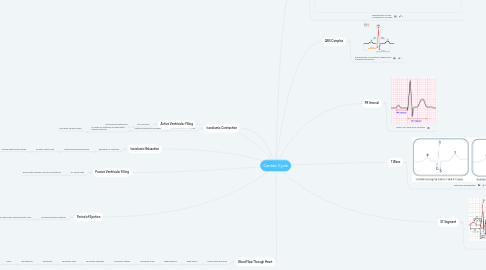Cardiac Cycle
by Kailah Fischer


1. Isovolumic Contraction
1.1. Ventricles begin to contract
1.1.1. Ventricle pressure is increased
1.1.1.1. All valves are closed so no blood flows outside ventricles
1.1.1.1.1. First heart sound is heard
2. Period of Ejection
2.1. Increased ventricle pressure
2.1.1. Opens pulmonary valve and aortic valve
2.1.1.1. Blood empties from ventricles into pulmonary trunk and aorta
3. Isovolumic Relaxation
3.1. Relaxation of ventricles
3.1.1. Ventricle pressure decreases
3.1.1.1. All heart valves close
3.1.1.1.1. Second heart sound is heard
4. Passive Ventricular Filling
4.1. AV valves open
4.1.1. Blood flows passively from atria to ventricle
5. Active Ventricular Filling
5.1. Atria contract
5.1.1. Fills ventricles with blood
6. Blood Flow Through Heart
6.1. Venae cavae and sinus
6.1.1. Right atrium
6.1.1.1. Right ventricle
6.1.1.1.1. Pulmonary trunk

